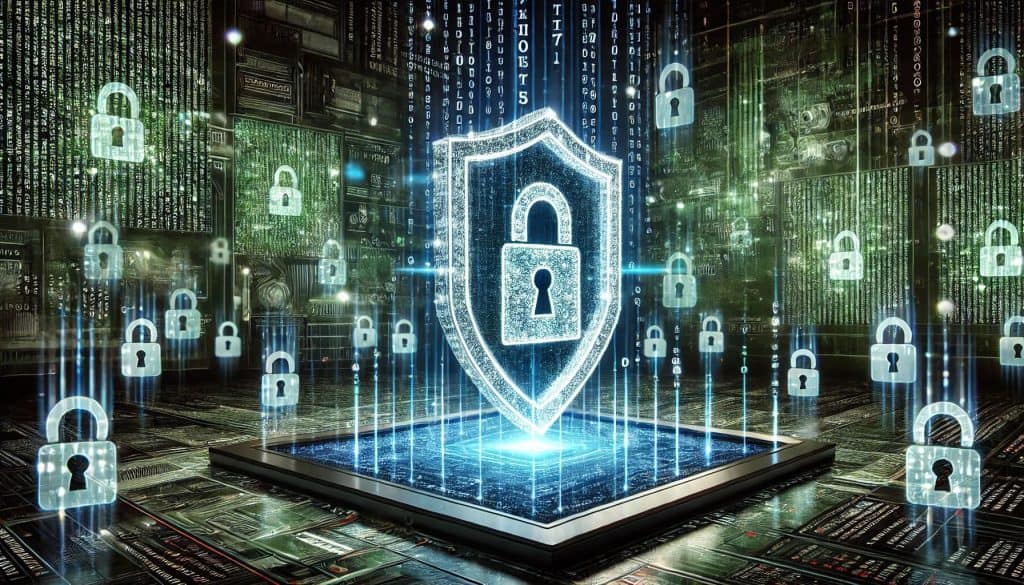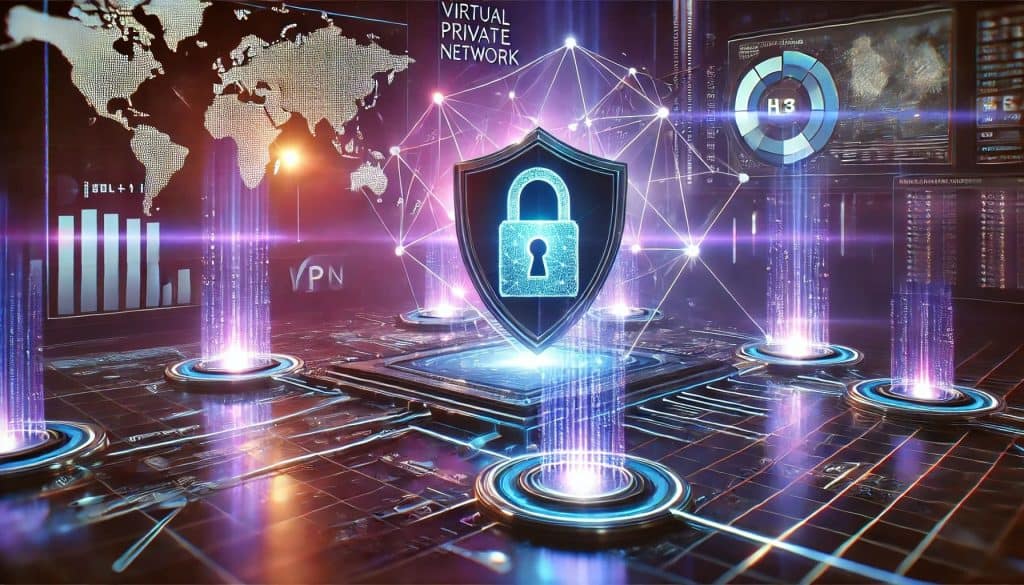In an era when digital security is paramount, understanding and implementing end-to-end encryption (E2EE) has become essential. In fact, this strong encryption method protects sensitive data from potential breaches by ensuring that only the people with whom it communicates can read the message. So let’s take a look at the background, evolution, types, and real-world applications of E2EE.
What is end-to-end encryption?

E2EE is a data encryption method that ensures that only the communicating parties have access to the messages being exchanged. Furthermore, this encryption technology ensures that no intermediary, including service providers, hackers, or governments, can decrypt and read the transmitted data. As a result, by using E2EE, you ensure the highest confidentiality and integrity of your communications.
End-to-end encryption background
E2EE grew out of the need to secure digital communications, especially as the internet and online transactions became more prevalent. With growing concerns about data privacy and cyber threats, E2EE has emerged as a powerful solution to protect information.
Historically, encryption methods have evolved from simple substitution ciphers to the complex algorithms used in modern E2EE systems. The primary goal has always been to protect data from unauthorized access and ensure that information is seamlessly accessible to the intended recipient.
Development

The evolution of E2EE can be traced back to the early days of cryptography. Here’s a brief timeline of the evolution of E2EE:
| Era | Key developments |
|---|---|
| Ancient times | A simple cipher used for military communications. |
| 20th Century | The advent of public key cryptography, which strengthens encryption methods. |
| 1990s | Introducing encryption protocols like SSL/TLS for secure internet transactions. |
| 21st Century | Widespread adoption of E2EE for messaging apps, email services, and data storage. |
As technology has advanced, so have the methods for breaking encryption. This ongoing battle between cryptographers and cyberattackers continues to drive innovation in E2EE, making it more secure and reliable.
Types of end-to-end encryption
E2EE can be implemented in a variety of ways, depending on the application and the level of security required. Here are some common types
| Type | Description |
|---|---|
| Symmetric encryption | Use the same key for both encryption and decryption. Requires efficient but secure key distribution. |
| Asymmetric encryption | Uses a pair of keys (a public key and a private key). It’s more secure because the private key is never shared. |
| Hybrid encryption | Combine symmetric and asymmetric methods to leverage the best of both worlds. |
Each type serves a variety of purposes, with asymmetric encryption being the most common in E2EE applications due to its enhanced security features.
Encrypted vs. unencrypted data
Understanding the difference between encrypted and unencrypted data is critical to understanding the value of E2EE:
- Encrypted data: Data that has been converted to a secure format using an encryption algorithm so that it can only be accessed or read by someone with the appropriate encryption key.
- Unencrypted data: Also known as plain text, this data is in its original, readable form and is vulnerable to unauthorized access and breaches.
By comparing these two states, you can clearly see why you’re encrypting
How does end-to-end encryption work?
E2EE includes several steps to ensure secure communications, including
- Key generation: Each party generates a pair of encryption keys (public and private).
- Key exchange: Public keys are exchanged between communicating parties.
- Encryption: The sender encrypts the message using the recipient’s public key.
- Send: The encrypted message is sent over the network.
- Decryption: The recipient decrypts the message using your private key.
This process ensures that even if a message is intercepted in transit, it can’t be decrypted without the private key.
Here’s a video that explains end-to-end encryption in more detail:
Pros and cons
E2EE offers many advantages, but it also has disadvantages. Here’s a concise comparison
| Prose | Cones |
|---|---|
| Ensure privacy and confidentiality | Can be complex to implement |
| Protect against data breaches | Potential regulatory challenges |
| Build trust in digital communications | May impact performance |
Despite these challenges, the advantages of E2EE far outweigh the disadvantages, making it the preferred choice for secure communications.
Companies using end-to-end encryption
Many companies are adopting E2EE to ensure the security of their services. Here are some notable examples
WhatsApp uses E2EE for all communications, ensuring that no one but the sender and recipient can read the message. This encryption is also applied to text messages, voice calls, and video calls, making WhatsApp one of the most secure messaging platforms available today.
Signals
Signal is known for its robust implementation of E2EE. It not only encrypts messages, but also provides a platform for secure voice and video calls. Signal’s commitment to privacy and security has made it the preferred choice for privacy-conscious users and even activists.
Proton Mail
Proton Mail provides an encrypted email service that ensures that the contents of your emails remain private and secure. By using E2EE, Proton Mail provides a high level of security for sensitive communications, ensuring that not even Proton Mail can read your emails.
Zoom
With the rise of remote work and virtual meetings, video conferencing tools like Zoom have implemented E2EE to keep conversations secure. This makes Zoom a safe choice for business meetings and personal conversations, as video calls are protected from unauthorized access.
These companies emphasize the growing importance and adoption of E2EE across a variety of sectors.
Applications of end-to-end encryption

E2EE is used in a wide range of applications, including
Messaging apps
Messaging apps like WhatsApp and Signal use end-to-end encryption to ensure that all communications are secure. This is especially important in today’s digital age, where personal and sensitive information is often shared through these platforms.
Email services
Proton Mail provides an encrypted email service that ensures that the contents of your emails remain private and secure. Furthermore, by using E2EE, Proton Mail ensures that emails cannot be read, even by Proton Mail, thus providing a high level of security for sensitive communications.
Video conferencing
With the rise of remote work and virtual meetings, video conferencing tools like Zoom have implemented E2EE to keep conversations secure. This protection prevents unauthorized access to sensitive business information and private conversations.
Data storage
Services like Dropbox use E2EE to keep stored data secure, so files stored in the cloud remain private and protected from unauthorized access, providing peace of mind for users storing sensitive information.
Conclusion
E2EE is a critical component of modern digital security; therefore, individuals and organizations can better protect their sensitive information by understanding its mechanisms, benefits, and applications. The evolving landscape of cyber threats makes it imperative to adopt robust security measures, and E2EE stands out as a trusted solution.
FAQ
What does an encrypted message mean?
An encrypted message is one in which the content is converted to an encrypted format to ensure privacy.
Is end-to-end encryption secure?
Yes, end-to-end encryption is considered one of the most secure ways to protect data in transit because it ensures that only the intended recipient can decrypt and read the message.
How do I implement end-to-end encryption?
An E2EE implementation involves generating a secret key, exchanging public keys, encrypting the message with the recipient’s public key, and encrypting the message with the private key.
References
- TechTarget. End-to-end encryption (E2EE).
- IBM. End-to-end encryption.
- Protons. What is end-to-end encryption?
